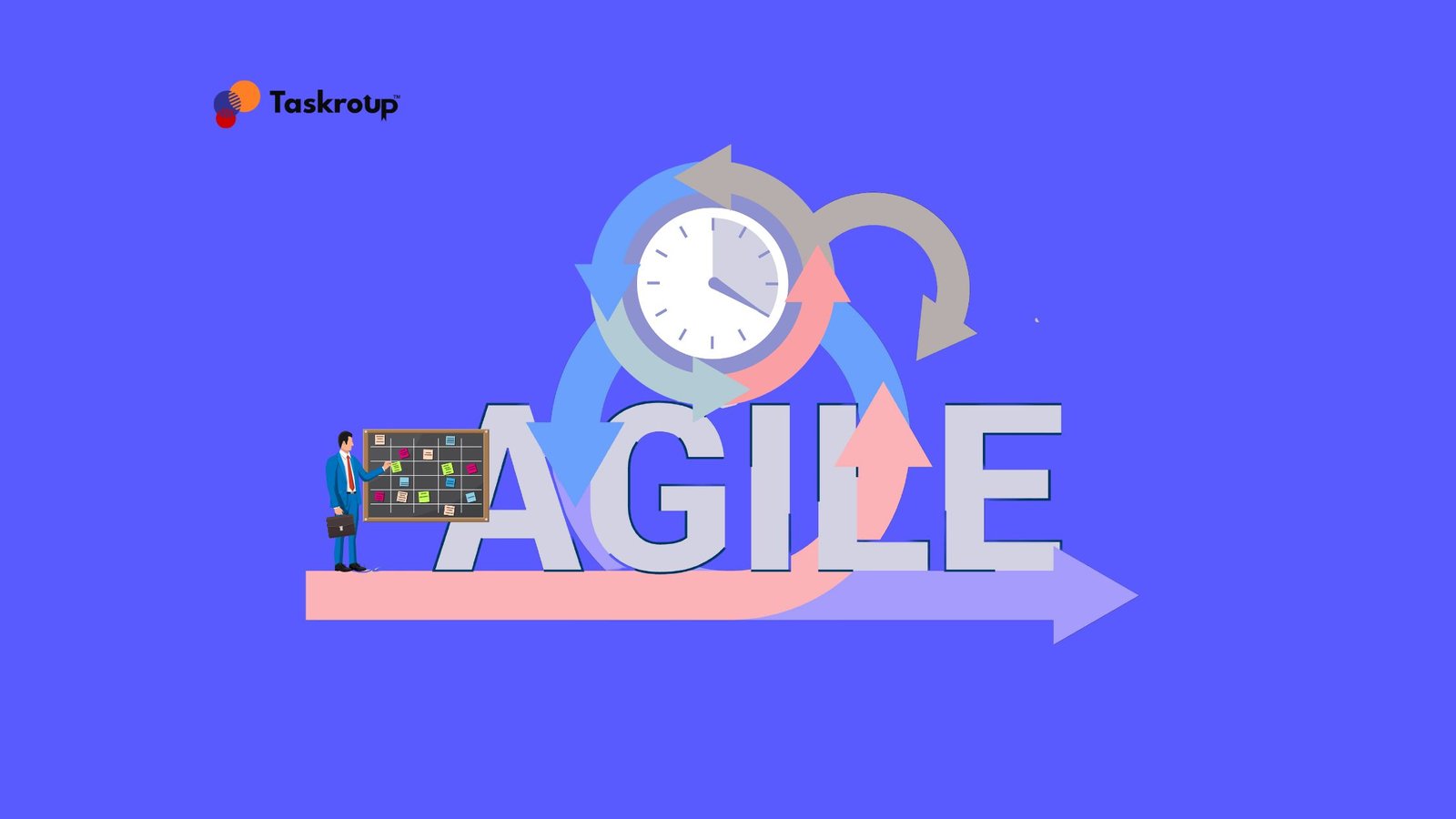Physical Address
304 North Cardinal St.
Dorchester Center, MA 02124
Physical Address
304 North Cardinal St.
Dorchester Center, MA 02124

Each company recognizes that the art of software development is unique, requiring the care and attention of a flexible workforce eager to act fast on changes. This is where AI software development companies come in, providing Agile project management and project management software. Using these two components together, teams can significantly improve their workflow and efficiency.
Cross-functional cooperation and continual improvement are given top priority in the agile methodology project management strategy. It breaks down projects into more manageable stages and leads teams through planning, carrying out, and assessing tasks in succession.
Agile project management does not need an oversight of a project manager, as traditional ‘waterfall’ project management does. Instead, teams share the project manager’s tasks in order to improve internal communication and collaboration. Results are examined more frequently, rather than simply at the end, and teams adjust to shifting feedback and expected results, leading to a process of continuous development.
Agile prioritizes the satisfaction of clients and incorporates their input to choose how to proceed with a project. As a project progresses, it is constantly tested and updated to suit the customer or client’s needs, even if they change during development. In agile, a project manager serves as a liaison between the development team and the customer.
Agile places a high value on customer satisfaction and decides how to move forward with a project based on their feedback. Even if requirements change while a project is being developed, it is continually tested and updated to meet the demands of the client or customer. In agile, the project manager acts as a connection between the development team and the customer.
Agile methodology has emerged as a leading approach to project management, offering a flexible framework that empowers teams to deliver high-quality results efficiently and iteratively.
Start of the Program:
The Agile journey begins at the beginning of the project, where the team defines the vision, goals and scope of the project. During this phase, stakeholders work together to define project objectives and establish a shared understanding of desired outcomes.
Sprint Schedule:
Once a project is started, the team moves into the Sprint Planning phase, where the project is broken down into executable “sprint” or “iteration” pieces During a sprint planning meeting, the team selects items together from behind the scenes the tasks are defined and need to complete them.
Sprint Group Use:
With a race plan in place, the team begins the tasks defined for the race. Frequent stand-up meetings are fair and focused, providing an opportunity to discuss progress, identify roadblocks, and adjust policies as needed.
Sprint Review:
At the end of each sprint, the team holds a sprint review meeting to present the completed work to stakeholders and gather feedback. This feedback loop is important for implementing ideas, refining requirements, and ensuring that the product meets end users’ needs.
Sprint Retrospective
The final phase of the Agile cycle is the Sprint Retrospective, where the team reflects on their process and identifies areas for improvement. Regular reviews keep teams learning and adapting, continually improving productivity and efficiency.
Making meaningful progress with your chosen Agile methodology requires measuring project performance. You may be able to gain important insights for upcoming Agile projects by keeping an eye on the things that succeeded and failed during the project management process.



